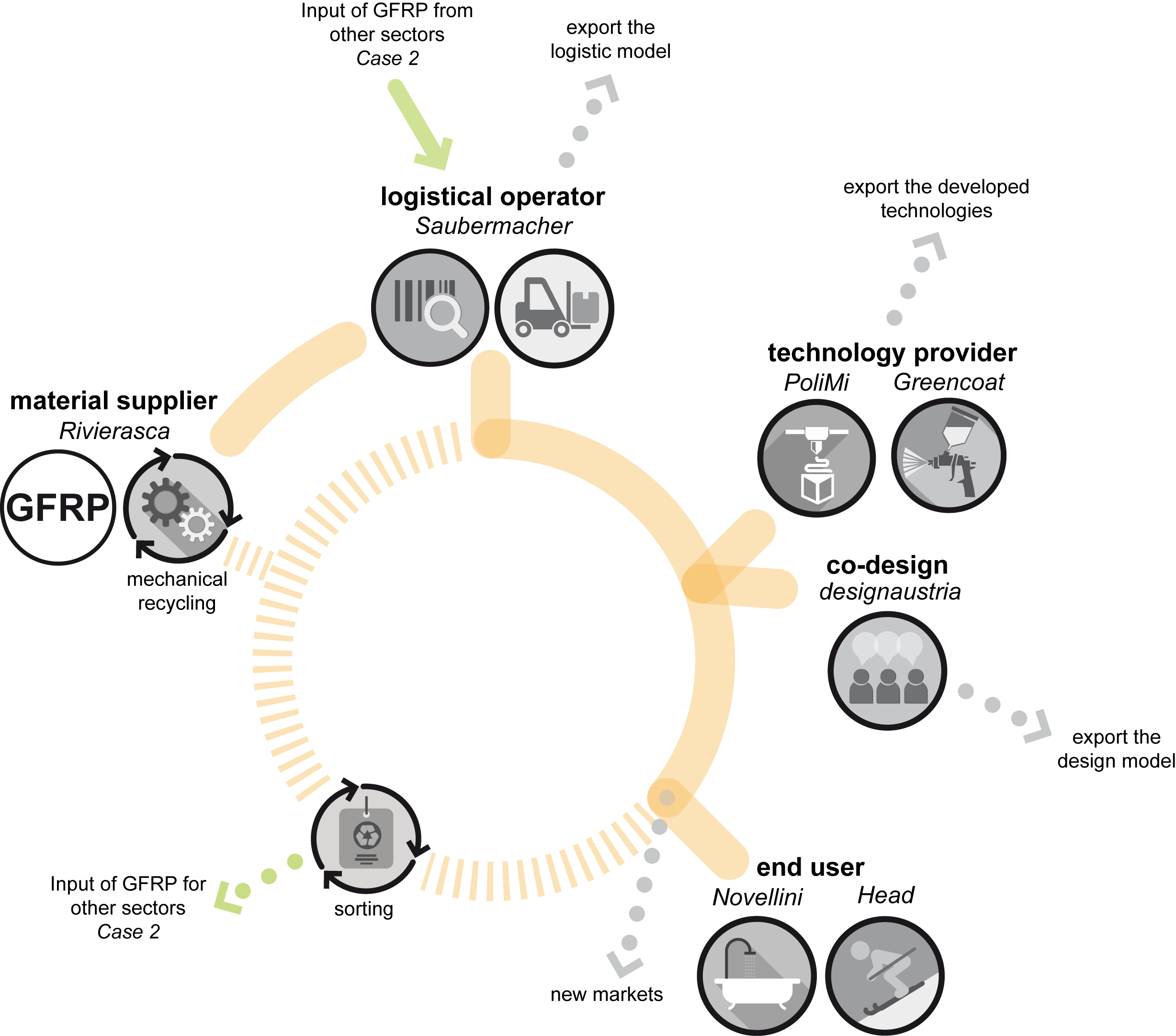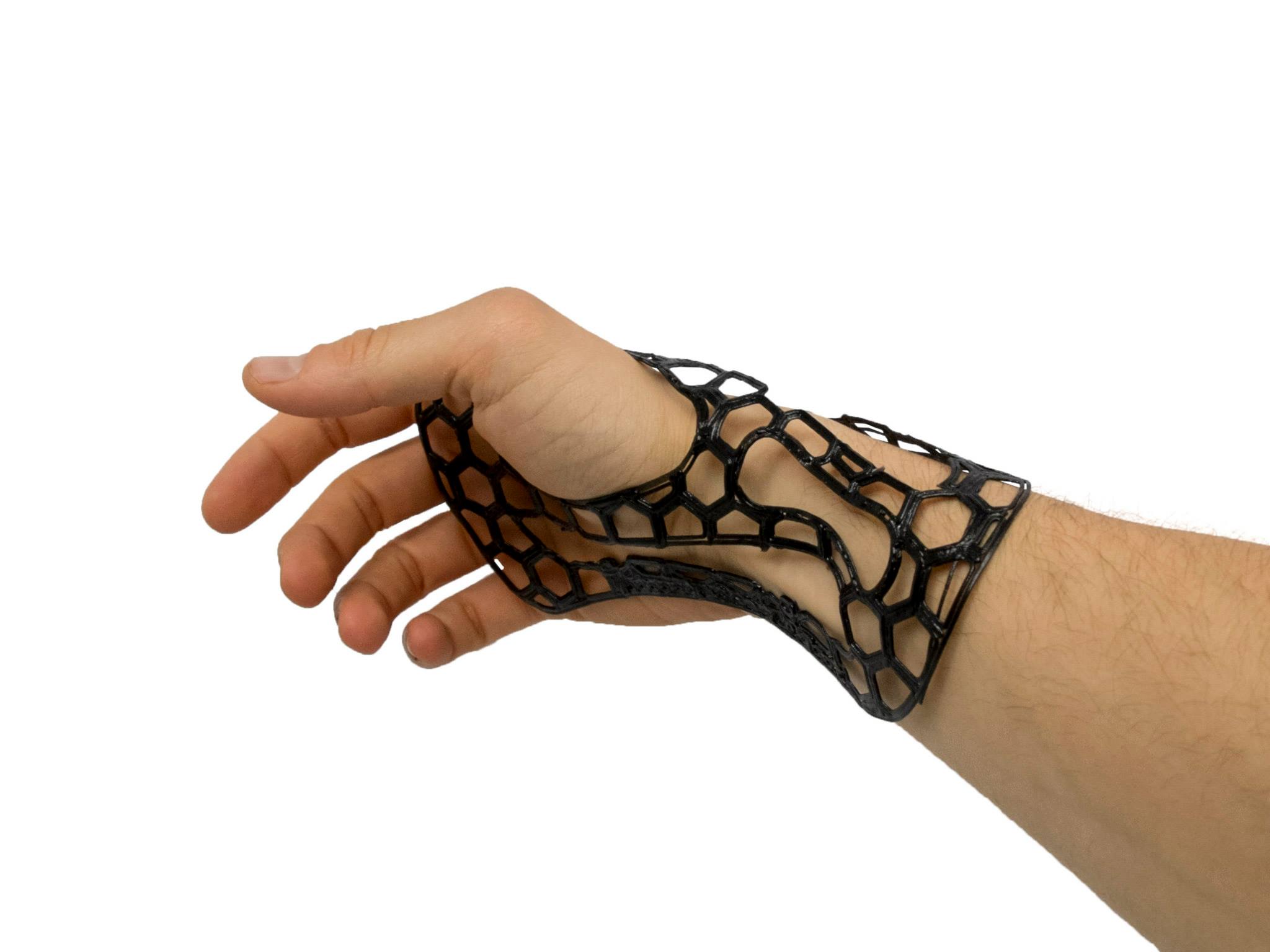Mechanical recycling (Use-Case 1)
of short GFRP and re-use in added-value customized applications
Input sector: EoL GFRP from constructions
Output sectors: Furniture products, Creative products, Sport products
Materials and recycling technology: resin containing short GF 3-10 mm, mechanical recycling
Reprocessing: additive remanufacturing, compounding, extrusion, molding, finishing

Description of the problem:
The market for GFRP in buildings and construction is very large (around 300 kton/y) but very fragmented with a variety of SMEs involved in this business. Representative products are pipes, ladders, laminates, roofs, conduits, shafts, and frameworks. This kind of composite waste is one of the more frequently landfilled, posing a high environmental concern. The model that will be followed in the FiberEUse project is based on the concept of “extended producer responsibility” (OECD (2001)). GFRP manufacturers need to be encouraged and stimulated to take back their products at the end of their useful lives, and shown how to make profit from this. New business opportunities can be realized by careful evaluation and minimization of logistical costs. New product concepts based on recyclates need to be developed for a wider market and social acceptance, making possible the realization of new circular economy business cases making profit and at the same time saving raw materials, energy and reducing emissions.
Description of the solution:
Rivierasca is a SME with business in the manufacturing of GFRP laminates by extrusion. The raw material is, as average, a composite made of GF and unsaturated polyester, a product with a market value around 1.5-1.8 €/Kg. The landfilling cost of composites in Lombardy is currently around 0.14-0.20 €/Kg, but such a cost is supposed to increase. Composite landfilling is already banned in other EU countries like Germany. Both continuous extrusion lines and a pilot grinding plant are available for experimental development at Rivierasca. Primary recycling (scrap recovery) is already in use in the company, saving the landfilling cost and recovering raw material. An important feature to minimize the overall recycling costs and to make more profitable the proposed solutions for all the actors of the value chain is the minimization of logistical costs. The partner Saubermacher will participate as dismantler and logistical operator. It will deliver a plan reporting the mapping of the main existing landfilling sites active in Europe for the treatment of inert materials from the construction/building sector. The analysis will include the evaluation of the input flow of EoL waste composites, the estimation of the amount of already landfilled GFRP waste, the planning of smallscale mechanical grinding centers (output 1-10 ton/h) located at the landfilling sites. More generally, the logistical tools will be individuated in order to realize a cooperating network of small scale mechanical recycling plants, close to where the waste material is available or close to original manufacturing sites. This approach will offer several advantages against centralized, large scale recycling plants, including a much lower installation cost, an easier authorization procedure, and favorable logistics. The optimal recycling plant density and distribution will be determined as a result of LCA extended to different reverse logistic options.

Demo-case 1: One potential output sector for GFRP mechanical recyclates as fillers for the production of new composite components is represented by furniture and interior design products. A particular cas
e is represented by sanitary products like shower trays and bath tubs, made in GFRP composite through open mold spray lay-up. It is aim to use a fraction (at least 40% w/w) of GFRP recyclate in open mould spray applications of GFRP for sanitary products products (bath tubs, shower trays).

Demo-case 2: An example of personalized product made of CFRP recently realized through 3D printing at POLIMI (a wrist brace). It is aim to use a fraction (at least 30% w/w) of GFRP recyclate for prototyping personalized and creative products (i.e. creative packaging etc).
Demo-case 3: A fraction of GFRP mechanical recyclate will be used as filler to strengthen the polyurethane (PU) materials currently used by HEAD for the manufacturing of skis and other sport components. It is aim to use a fraction (at least 10% w/w) of GFRP recyclate to strengthen PU compounds for the realization of sport equipment (skis).
The main technical challenges of the Use-case 1 will be:
- Optimization and automation of mechanical grinding of GFRP waste for low-cost recycling.
- Optimization of innovative 3D-printing processes for the remanufacturing of GFRP recyclates with high recyclate content and sustainable resins.
- Low cost and environmentally friendly surface finishing by UV-curing / PVD metallization of remanufactured GFRP.
